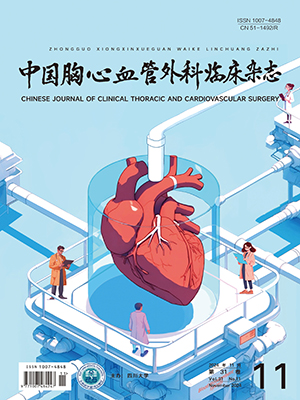Objective To develop a new small-caliber vascular xenograft and evaluate the feasibility of xenogenic artery for coronary artery bypass grafting. Methods Canine carotid arteries were decellularized by detergent and enzymatic extraction. All decellularized xenografts were randomly divided into two groups. Heparin-linked group (n=24): grafts were then covalently linked with heparin. Non-heparin-linked group (n=24): as control. Xenografts in two groups were implanted in rabbits' left and right carotid artery respectively as bypass grafts. Graft patency was checked by ultrasonography after 3 weeks, 3 and 6 months. Grafts were harvested after 3 and 6 months. Microscopic observation and immunohistochemical staining were performed. Results All the cells were removed while the extracellular matrix were well preserved observed. Heparin was successfully linked to the grafts through their whole thickness. There was no obstruction at both sides after implantation of the grafts, while less thrombus was found in the decellularized heparin-linked grafts than in the other side. Smooth muscle cells densely populated the graft wall and endothelial cells covered the lumen at 3 months after implantation. Conclusion Canine common carotid artery treated by detergent and enzymatic extraction and heparin linkage may be a new small-caliber vascular xenograft for coronary artery bypass grafting.
Citation: WANG Xuening,CHEN Changzhi,YANG Min,et al .. Experimental Study of Small-caliber Vascular Xenograft for Coronary Artery Bypass Grafting. Chinese Journal of Clinical Thoracic and Cardiovascular Surgery, 2006, 13(4): 247-250. doi: Copy




